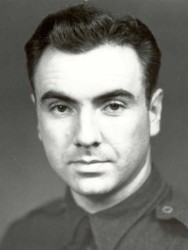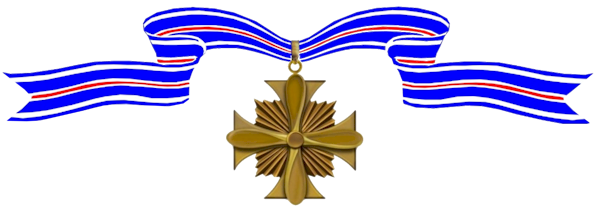After the war it was learned that Captain Pease survived being shot down, and was taken prisoner by the Japanese after bailing out of his B-17. On October 8, 1942, he and five other prisoners were beheaded by the Japanese after being forced to dig their own grave. His was the first Medal of Honor awarded for aerial valor in World War II, other than the award to Jimmy Doolittle for his famous Tokyo raid five months earlier.

–
Cemetery:
Awards Received
-

Medal of Honor
-

Prisoner of War Medal
-
Medal of Honor
Service:
United States Army Air ForcesRank:
Captain (Air Corps)Batallion:
93d Bombardment SquadronRegiment:
19th Bombardment Group (H)Division:
5th Air ForceAction Date:
August 6 & 7, 1942
War Department, General Orders No. 59, November 4, 1942The President of the United States of America, in the name of Congress, takes pride in presenting the Medal of Honor (Posthumously) to Captain (Air Corps) Harl Pease, Jr., United States Army Air Forces, for conspicuous gallantry and intrepidity above and beyond the call of duty serving with the 93d Bombardment Squadron, 19th Bombardment Group (H), Fifth Air Force in action with the enemy on 6 – 7 August 1942. When one engine of the bombardment airplane of which he was pilot failed during a bombing mission over New Guinea, Captain Pease was forced to return to a base in Australia. Knowing that all available airplanes of his group were to participate the next day in an attack on an enemy-held airdrome near Rabaul, New Britain, although he was not scheduled to take part in this mission, Captain Pease selected the most serviceable airplane at this base and prepared it for combat, knowing that it had been found and declared unserviceable for combat missions. With the members of his combat crew, who volunteered to accompany him, he rejoined his squadron at Port Moresby, New Guinea, at 1 a.m. on 7 August, after having flown almost continuously since early the preceding morning. With only three hours’ rest, he took off with his squadron for the attack. Throughout the long flight to Rabaul, New Britain, he managed by skillful flying of his unserviceable airplane to maintain his position in the group. When the formation was intercepted by about 30 enemy fighter airplanes before reaching the target, Captain Pease, on the wing which bore the brunt of the hostile attack, by gallant action and the accurate shooting by his crew, succeeded in destroying several Zeros before dropping his bombs on the hostile base as planned, this in spite of continuous enemy attacks. The fight with the enemy pursuit lasted 25 minutes until the group dived into cloud cover. After leaving the target, Captain Pease’s aircraft fell behind the balance of the group due to unknown difficulties as a result of the combat, and was unable to reach this cover before the enemy pursuit succeeded in igniting one of his bomb bay tanks. He was seen to drop the flaming tank. It is believed that Captain Pease’s airplane and crew were subsequently shot down in flames, as they did not return to their base. In voluntarily performing this mission Captain Pease contributed materially to the success of the group, and displayed high devotion to duty, valor, and complete contempt for personal danger. His undaunted bravery has been a great inspiration to the officers and men of his unit.
-
Prisoner of War Medal
Service:
United States Army Air ForcesRank:
Captain (Air Corps)Batallion:
93d Bombardment SquadronRegiment:
19th Bombardment Group (H)Division:
Prisoner of War (South Pacific)Action Date:
August 7, 1943 – Died in Captivity
Captain (Air Corps) Harl Pease, Jr. (ASN: 0-395206), United States Army Air Forces, was captured by Japanese forces after he was shot down in the Southwest Pacific on 7 August 1943. Post-war records indicate he was held as a Prisoner of War and was subsequently executed in captivity on or about 8 October 1942.


